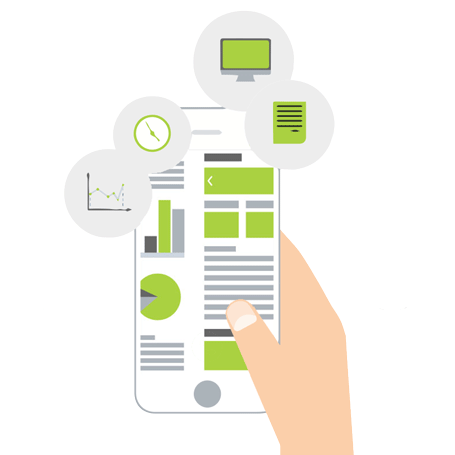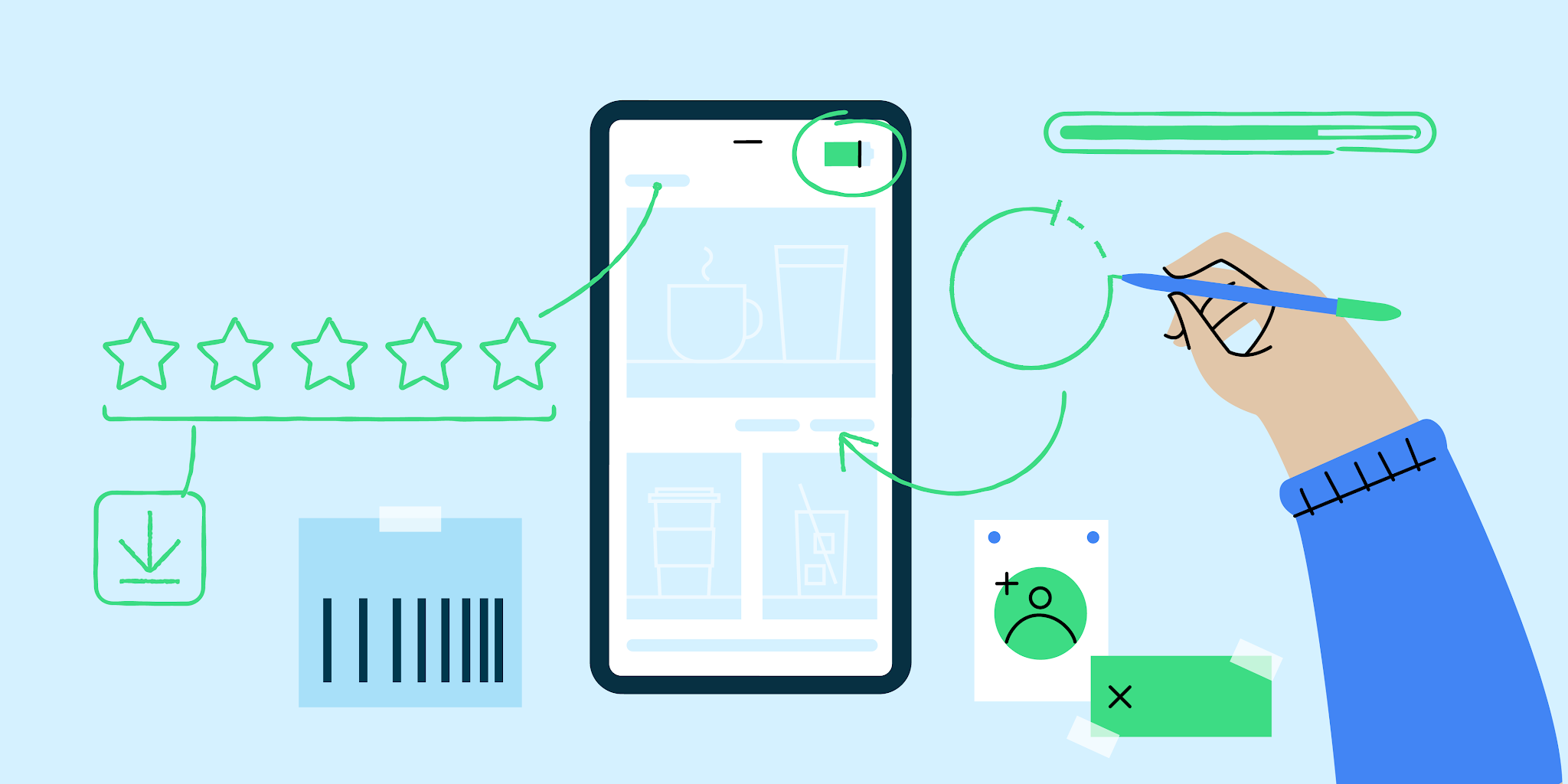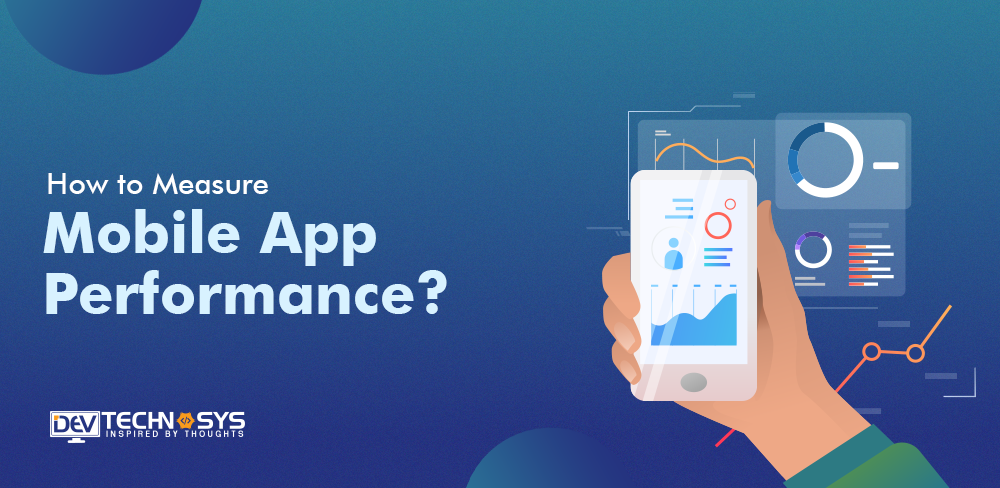“Performance Is The Heartbeat Of A Successful App.” – Steve Jobs
Mobile applications are an essential part of modern life. They cater to a wide range of needs and provide seamless functionality. It is just as important to monitor the performance of the mobile app as it is to develop it.
This comprehensive guide will examine the key metrics and methods to evaluate your mobile app performance. We’ll help you understand user engagement, app responsiveness, and loading speeds and evaluate crash rates and battery usage.
Learn how to use analytics and monitoring tools to get valuable insights about user behavior, identify pain points and optimize your app for an amazing user experience. A data-driven approach allows you to make better decisions, improve app performance and increase user satisfaction.
Join us for this informative journey, where we will empower you with knowledge and tools that will propel your mobile application toward excellence. Start measuring and optimizing your mobile app performance to achieve unrivaled success.
Why Should You Monitor Your App’s Performance?

It is vital to monitor your mobile app performance to ensure that your software project succeeds. Continuous performance monitoring is essential for any software project, whether a mobile app, web application, or other type. It can provide valuable insights, leading to better user experiences, greater efficiency, and improved business outcomes. In this section, we will explore why mobile app performance is important, its benefits, and the tools and methods for optimizing it.
1. User Experience and Satisfaction
Monitoring your mobile app performance will ensure that the user experience is smooth and enjoyable. App performance is a key factor for users who have high expectations.
Any delays or glitches could lead to frustration. A negative user experience in today’s competitive environment can cause users to quickly abandon your app. Monitoring mobile app performance metrics such as response time, error rates, and resource usage will allow you to proactively identify and resolve issues, resulting in a seamless user experience that promotes loyalty and satisfaction.
2. Business Impact
The mobile app performance directly impacts the bottom line of your business. Slow or unreliable applications can decrease user engagement, conversions, and revenue. A well-performing application can increase user retention and encourage positive word-of-mouth, which attracts new customers.
App performance can also influence ratings and reviews from users, which significantly impact an app’s popularity and discoverability in app stores and online markets. Monitoring your app’s performance allows you to stay on top of any potential problems, protecting your reputation and revenue stream.
3. Identification of bottlenecks and performance issues
Performance monitoring helps you identify bottlenecks and pinpoint performance problems. It gives you visibility into your application’s infrastructure, such as server response time, database queries, and network latency.
This information allows you to identify the root cause of errors or slowdowns and make informed decisions about how to optimize your critical application areas. You can proactively resolve mobile app performance bottlenecks before they become severe issues that negatively impact user experience.
4. Scalability and Capacity planning
Your infrastructure will be increasingly strained as the number of users increases. Performance monitoring helps with capacity planning by providing insights into resource usage, traffic patterns, and peak usage times.
You can plan for future infrastructure expansions or upgrades by understanding your app’s scaling limits. This proactive approach will ensure that your app is able to handle increased traffic and maintain its optimal performance even during times of high load.
5. Cost Optimization
Inefficient code and resource usage can result in unnecessary infrastructure costs. Monitoring mobile app performance will help you identify areas that can be optimized regarding resource usage, which can reduce the need for expensive hardware upgrades or overprovisioning. You can save money by optimizing your app’s performance and aligning infrastructure costs with actual usage.
6. DevOps collaboration and troubleshooting
Monitoring the performance of a development project facilitates collaboration between the development and operations teams (DevOps). Mobile app development company can use real-time metrics to diagnose performance problems.
This collaboration speeds up the debugging, reduces mean time to resolve (MTTR), and ensures that issues are dealt with promptly. DevOps can validate mobile app performance continuously throughout its lifetime by integrating monitoring tools in the development and deployment processes.
7. Security and Anomaly Detection
Performance monitoring is also useful for detecting anomalies related to security. Unusual traffic patterns or spikes in resource consumption could indicate security threats, such as DDoS or unauthorized access. Monitoring tools alert you to anomalies and allow you to implement security measures quickly to protect your app and data.
8. Compliance and Service Level Agreements
Several industries have service-level agreements that require certain levels of performance and uptime for apps. You can track and report on compliance by monitoring your mobile app performance. Accurate performance data can facilitate stakeholder discussions and demonstrate your app’s SLA commitment.
9. Continuous Improvement
Monitoring mobile app performance is key to a culture that promotes continuous improvement. Analyzing historical performance data will help you identify trends and patterns which can provide insights into the strengths and weaknesses of your app.
This data-driven method allows you to make better decisions for future updates and improvements, which will keep your app competitive in a rapidly changing technology landscape.
10. Customer Service and Satisfaction
Customer support teams can also benefit from performance monitoring. Customer support can use real-time data on performance to better understand and assist users. Customer satisfaction is improved when you resolve user issues quickly.
How To Measure Mobile App Performance?

Businesses and developers need to measure mobile apps’ performance to ensure they meet user expectations. Monitoring the behavior of an app, including responsiveness, speed, and resource usage, is part of this process. This guide will explore key metrics and tools for measuring mobile app performance.
1. Response Time
Basically, it’s how long it takes for an application to respond to a user’s input. Record the timestamps of when an action by the user is triggered and when its response is displayed. Calculate the difference in time to determine any delays. It is important to have a quick response time for a good user experience.
Use profiling tools to analyze app performance to ensure a quick and seamless response. Monitor response times to identify bottlenecks and improve mobile app performance.
2. Loading Time:
The load time is how long an app takes to fully function after opening. Use tools such as Systrace for Android or Instruments for iOS to analyze and record the startup sequence of an app, including when working with a digital marketing agency. Analyze how long it takes to initialize an app, display its interface, and load resources. Optimize code, reduce dependencies, and use caching to improve load time. Faster load times increase user satisfaction and engagement. It is why it’s important to assess the mobile app’s performance.
3. Latency:
In computing, latency is defined as the time it takes for data to travel between the user’s device and the server. Use mobile app performance and network analysis utilities to measure latency. To understand how an app performs in different network scenarios, simulate various conditions.
High latency can negatively impact the user experience by causing slow data retrieval and inefficient synchronization. Dedicated developers can improve the user experience by tracking and optimizing the latency. It is especially important when it comes to real-time data and online interactions.
4. Battery Consumption:
Battery consumption is the amount of energy an app consumes while it operates, directly affecting the battery life. Battery monitoring tools can measure battery consumption by tracking energy usage during app operation.
Analyze battery-intensive processes, background activities, and inefficient codes to identify areas that require optimization. Developers can improve an app’s battery efficiency by reducing the energy it consumes. It will prolong the device’s usage and provide a better experience for the user with minimal impact on their battery.
5. Memory Usage:
The amount of memory an app consumes during execution is called memory usage. Developers can use memory profiling tools to measure memory usage. These tools monitor memory allocation and deallocation. These tools can help detect memory leaks, excessive memory usage, and inefficient management. It is important to analyze memory usage to avoid app crashes and maintain smooth performance. Optimizing memory usage allows mobile app developers to improve an app’s stability, responsiveness, and overall experience.
6. Use of the Network:
Network usage is the amount of data the app uses when interacting with servers and the internet. Developers can use network monitoring libraries or tools like OkHttp to measure network usage.
These tools measure the size and frequency of the app’s network requests. The analysis of network usage can help identify data bottlenecks and excessive consumption. Developers can reduce data costs and improve the overall experience of their app by optimizing network usage.
7. Report Crash:
Crash reporting is a process for tracking and analyzing crashes. Crash reporting tools such as Crashlytics or Firebase enable developers to track crashes in their apps. These data provide developers with insights into the causes of crashes and allow them to identify and fix problems quickly. Crash reporting helps improve app stability and the user experience. It allows developers to proactively resolve problems that may negatively impact a mobile app performance testing tools or user satisfaction.
8. Screen Rendering Time:
The screen rendering time is when an app displays the content on the screen. Digital marketers and developers can measure screen rendering times using profiling tools or GPU rendering analysis. Slow rendering can result in a choppy, unresponsive interface. Developers, with input from digital marketers, can reduce screen rendering times by optimizing layout, minimizing complicated rendering processes, and using hardware acceleration. It will ensure a smooth, visually pleasing experience for the user.
9. Frames per second (FPS):
FPS is a measure of how smoothly animations, transitions, and other visual effects are displayed. Developers use GPU rendering analysis and profiling tools to calculate FPS.
A higher FPS number indicates a smoother experience for the user, while a lower FPS can lead to a laggy application. Developers can increase FPS by optimizing UI, animations, and rendering processes. It will ensure a visually pleasing and responsive app.
10. Error Rates:
The error rate is a measure of the number and type of errors that occur in an app. Examples include HTTP errors or API failures. Developers use logging and monitoring tools to measure error rates. Error log analysis may aid in identifying issues that may negatively affect user experience.
Developers can improve app stability and reliability by reducing errors through bug fixes and improved error handling. Error rate measurement is critical for mobile app optimization and mobile app performance KPIs evaluation because minimizing errors improves user satisfaction and retention.
11. User Engagement Metrics:
The user engagement metrics measure how the users engage with an app and its popularity and stickiness. In addition to daily active users, monthly active users, retention rates, and session duration, there are several key metrics to consider.
Developers use analytics tools to gather data about user behavior and activities within the app. These metrics provide insights into app success, user satisfaction, and appeal. Understanding user engagement patterns allows developers to make informed decisions about the app’s content, features, and user experience. It will ultimately lead to higher mobile app performance and retention.
12. App Size:
An app’s size is the amount it takes up on the user’s device. Developers can measure the app size by checking the APK file size (Android Package) or IPA file size (iOS App), including all dependencies and resources. Larger app sizes can cause longer update and installation times, particularly on slower internet connections.
Developers can reduce app size by optimizing assets, compressing pictures, and removing unnecessary library files. It will not compromise essential features. Smaller app sizes improve user experience, encourage more downloads and provide smoother mobile app performance for users.
13. Network Speed Variability:
Network speed variability is the variation in connection speeds that mobile users experience in different places or conditions. To measure network speed variability, developers can simulate different network conditions, such as Wi-Fi, 3G, or 4G. Understanding network speed variance helps Android app developers identify performance issues related to data transfer, load times, and user experience within different network environments. Developers can achieve consistent performance by optimizing app behavior in various network conditions.
14. A/B Testing:
A/B testing involves releasing different versions of an app (A and B) to a small group of users and comparing their performance. This technique helps determine which version delivers better results based on predefined metrics or user behavior. Developers can use the data to make informed decisions about design elements, user interaction, and features. A/B mobile app performance testing allows for iterative improvement, optimizing mobile app performance and user experience. It leads to a successful and engaging mobile application.
Parting Words!
It is essential to measure the performance of mobile apps. Use key metrics such as load times, crash rate, and user engagement in order to evaluate the app’s efficiency. Implement performance monitoring and analyze data regularly. Prioritize an intuitive user experience, identify bottlenecks, and make data-driven changes.
Consistent monitoring allows your app to remain competitive in the mobile app market and maintain customer satisfaction. So if you want to build a mobile application it is crucial to learn about the mobile app development cost.
Frequently Asked Questions
Q1: What Is The Importance Of Measuring Performance In Mobile Apps?
Measuring the mobile app performance ensures optimum user experience. It identifies problems, optimizes resources, enhances customer satisfaction, and drives higher app adoption rates.
Q2. What Are Key Performance Indicators For Mobile Apps (Kpis?
Key KPIs are key KPIs for app response time, loading time, crash rates, and user engagement metrics such as sessions, retention, conversion rates, ratings in the app store, and in-app error.
Q3. What Is The Best Way To Measure An App’s Response Time?
Track app response times using performance monitoring tools. App response time can be measured to identify bottlenecks.
Q4. How Can I Measure User Engagement With My Mobile App?
Track user sessions, screen flows, time per session, and retention rates. These metrics can be used to measure user engagement and improve the system.
Q5. How Can I Measure The Performance Of My Mobile App?
Use tools such as Firebase Performance Monitoring (FPM), New Relic Mobile (NRM), AppDynamics, and Google Analytics for Mobile Apps in order to evaluate mobile app performance efficiently and comprehensively.




























